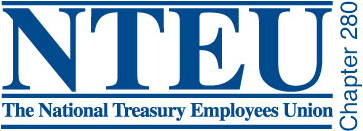On Tuesday, January 31, the U.S. Offices of Personnel Management (OPM) and Management and Budget (OMB) issued supplemental guidance on President Trump's recent hiring freeze memorandum. The memorandum supplements prior guidance issued January 25, 2017. The new memo lists a number of exceptions to the hiring freeze. The following exceptions potentially apply to EPA:
- Military personnel in the armed forces and all Federal uniformed personnel, including the U.S. Coast Guard, the Commissioned Corps of the U.S. Public Health Service, and the Commissioned Officer Corps of the National Oceanic and Atmospheric Administration. EPA has a number of people who are part of the uniformed services. It appears that EPA could fill some of its positions by bringing on members of the uniformed services. Filling of positions under programs where limiting the hiring of personnel would conflict with applicable law.
- Nomination and appointment of officials to positions requiring Presidential appointment, with or without Senate confirmation.
- Appointment of officials to non-career positions in the Senior Executive Service or to Schedule C appointments in the Excepted Service, or the appointment of any other officials who serve at the pleasure of the appointing authority (i.e., "appointed" positions of a political/non-career nature).
- Appointment of seasonal employees and short-term temporary employees necessary to meet traditionally recurring seasonal workloads, provided that the agency informs its 0MB Resource Management Office in writing in advance of its hiring plans.
- Appointments made under the Pathways Internship and Presidential Management Fellows programs (this does not include the Recent Graduates program).
- Conversions in the ordinary course to the competitive service of current agency employees serving in positions with conversion authority, such as Veteran's Recruitment Act (VRA) and Pathways programs.
- Appointments made under 5 C.F.R. § 213.3102(r) (time limited positions in support of fellowship or professional/industry exchange programs) provided that the total number of individuals employed under this authority does not exceed the number of employees on board (hired under this authority) on January 22, 2017.
- Placement of persons with restoration rights accorded by law, such as restoration after absence with injury compensation and restoration after military duty.
- Job offers made prior to January 22, 2017, for which the individual has a confirmed start date on or before February 22, 2017.
- Internal career ladder promotions.
- Re-allocations (i.e., noncompetitive reassignments and details) of current Federal civilian employees within an agency to meet the highest priority needs (including preservation of national security and other essential services) are not affected.
- Details (reimbursable and non-reimbursable) between agencies are also not affected; however, agency leadership should ensure that any reimbursable details between agencies are not being used to circumvent the intent of the hiring freeze.
- Term and temporary appointments of existing Federal employees may be extended up to the maximum allowable time limit, consistent with the conditions/requirements of the legal authority originally used to appoint the employee.
q. A limited number of voluntary transfers of current SES between agencies, as necessary to secure the leadership capacity of agencies, and where needs cannot be met by reallocation of resources within an agency's current workforce provided those transfers have OPM approval.
The memo further notes that if a job offer was made prior to January 22, 2017, but the person does not have a confirmed start date before February 22, 2017 (or no start date at all), the Administrator can nonetheless hire the person on a case-by-case basis with an eye toward mission-essential priorities, current agency resources, and funding levels. For these situations, the Administrator can also revoke the job offer.
The Administrator may also exempt any positions that it deems necessary to meet national security (including foreign relations) responsibilities, or meet public safety responsibilities (including essential activities to the extent that they protect life and property). OMB counsels that agencies may refer to its November 17, 1981, memorandum on "Agency Operations in the Absence of Appropriations" to determine which positions qualify.
Finally, the memorandum notes that the Director of OPM may grant additional exemptions from the hiring freeze for critical situations. Any request for a special exemption must come from the Administrator and must:
- explain the critical need and how it relates to essential services or critical mission requirements;
- explain why reallocation (reassignment/detail) of existing staff within the agency is not possible to meet the needs outlined in the request; and
- explain the urgency of the need and the consequences of not filling the position within a 3 to 6 month timeline.

